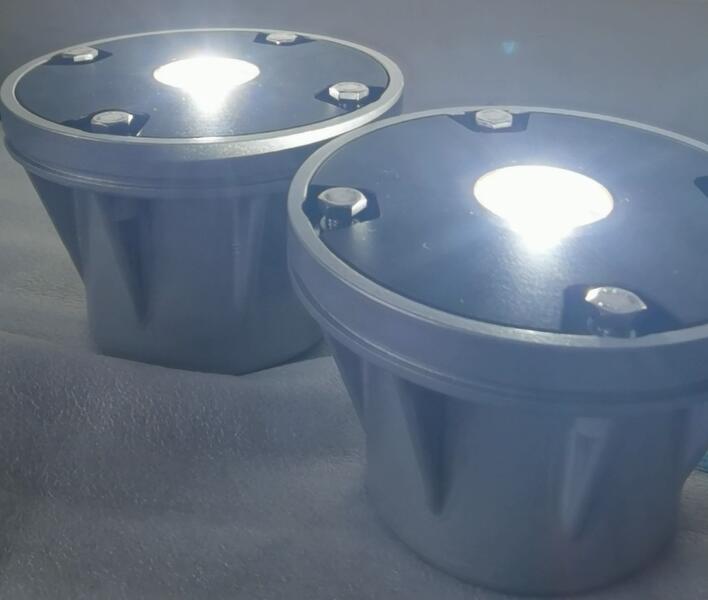TLOF lights (Touchdown and Liftoff lights) are critical components in the safe and efficient operation of heliports and helipads. Designed to provide clear visibility and guidance for pilots, these lights play a vital role during nighttime and low-visibility conditions. As aviation technology evolves, the importance of advanced TLOF lights continues to grow, enhancing safety and operational efficiency. This article examines the functionality, design considerations, and innovations in TLOF lighting systems.
What Are TLOF Lights?
TLOF lights are specialized lighting fixtures installed around the Touchdown and Liftoff area of a heliport or helipad. These lights mark the boundaries of the TLOF zone, ensuring that pilots can identify the landing area accurately, even in challenging conditions. Typically, TLOF lights are green to distinguish them from other aviation lights, following international standards.
Key Features of TLOF Lights

Visibility and Brightness
TLOF lights are designed to emit a steady, bright light that is visible from a distance, aiding pilots during approach and landing.
The brightness is carefully calibrated to prevent glare while providing sufficient illumination.
Durability and Weather Resistance
These lights must withstand harsh environmental conditions, including rain, snow, and extreme temperatures.
High-quality materials like corrosion-resistant metals and impact-resistant lenses are commonly used in their construction.
Energy Efficiency
Modern TLOF lights often use energy-efficient LED technology, which reduces power consumption and increases lifespan compared to traditional incandescent bulbs.
| tlof lights |
| tlof light |
Ease of Installation and Maintenance
TLOF lights are designed for quick installation and easy maintenance, minimizing downtime and operational disruptions.
Regulatory Standards for TLOF Lights
Compliance with aviation regulations is essential for the installation and operation of TLOF lights:
ICAO Guidelines
The International Civil Aviation Organization (ICAO) mandates specific standards for TLOF lights, including their color, placement, and intensity.
FAA Requirements
The Federal Aviation Administration (FAA) in the United States outlines detailed specifications for TLOF lighting in its advisory circulars.
Local Regulations
Regional authorities may impose additional requirements to address unique operational or environmental conditions.
Applications of TLOF Lights
Emergency Medical Services (EMS)
TLOF lights are crucial in EMS helipads, ensuring safe landings during critical medical emergencies, often under challenging visibility conditions.
Urban Heliports
In urban areas, where ambient light and obstacles can complicate operations, TLOF lights provide clear visual cues for pilots.
Offshore Platforms
TLOF lights are indispensable for offshore oil rigs and research stations, enabling helicopter landings in remote and harsh environments.
Innovations in TLOF Lighting Technology
Advancements in lighting technology have significantly enhanced the functionality and efficiency of TLOF lights:
LED Technology
LED TLOF lights offer superior energy efficiency, longer lifespan, and consistent performance compared to traditional lighting systems.
Solar-Powered Systems
Solar-powered TLOF lights reduce dependency on external power sources, making them ideal for remote locations and eco-conscious operations.
Smart Lighting Solutions
Integrated smart systems allow remote control and monitoring of TLOF lights, enabling adjustments based on weather or operational needs.
Dynamic Intensity Control
Advanced TLOF lights can adjust their brightness automatically based on ambient light conditions, ensuring optimal visibility without over-illumination.
Maintenance Best Practices for TLOF Lights
Regular maintenance ensures the reliability and longevity of TLOF lights:
Routine Inspections: Periodic checks for physical damage, loose connections, and functionality.
Cleaning: Removing dirt, debris, and moisture from lenses and fixtures to maintain optimal light output.
Component Replacement: Timely replacement of worn-out bulbs, batteries, or wiring to prevent system failures.
The Future of TLOF Lights
As the aviation industry advances, TLOF lights are poised to integrate more sophisticated technologies:
Integration with Urban Air Mobility (UAM)
TLOF lights will play a crucial role in vertiports designed for eVTOL aircraft, supporting the next generation of air transportation.
Enhanced Sustainability
The adoption of renewable energy sources and recyclable materials will make TLOF lighting systems more environmentally friendly.
Augmented Reality (AR) Compatibility
AR-enabled systems could incorporate TLOF lights into virtual navigation aids, further improving pilot situational awareness.
TLOF lights are more than just boundary markers; they are critical tools that ensure the safety and efficiency of helicopter operations. By adhering to regulatory standards and embracing technological innovations, TLOF lights continue to evolve, meeting the demands of modern aviation. As air mobility expands into new frontiers, the role of TLOF lights will remain indispensable, lighting the way for safer and smarter skies.